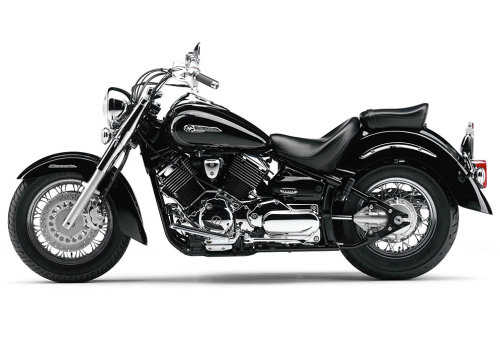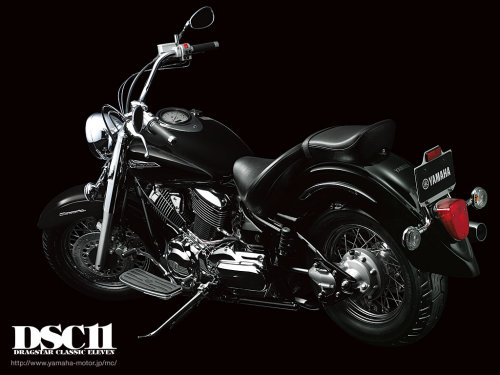BMW K1300S
Expected Launch Date: January, 2011
Estimated Price Tag : Rs 10,50,000 /-
The next generation of K Series BMW motorcycles has upped displacement to 1293cc.
Are you the type of guy whose idea of a Sunday ride consists of a ‘quick jaunt’ from L.A. to San Francisco or New York to North Carolina? Even better yet, from Germany to France? And do you have the need to do these trips with speed on your side, covering a lot of ground in a little time? If you answered ‘No’ to these questions, there’s probably not much need to read any further. But if you answered ‘Yes’, then BMW may just have the bike for you. Actually, it may have two bikes for you - the 2009 K1300S and K1300GT.
BMW K1300S
Starting with the more-sporty of the updated K-bikes, the first thing you notice when laying an eye on the new Beemer is, well, there's not much more than a different sticker on the tail section. Add a couple new colors and to the average Joe this would be all that separates new from old. But while it may look almost identical to the 1200S it replaces, the Germans focused their efforts on helping the 1300cc Inline-Four in other, more internal areas.
In a focus change for BMW, it has placed the U.S. as their highest ranking market segment worldwide, and made updates to these machines as a direct result of customer and journalist feedback on the previous edition. Listen to the consumers? What a concept…
The fully-faired BMW K1300S is a road-going BMW sportbike, with Beemer traits like heated grips, shaft drive and multiple electronic amenities.
What were the main areas of concern? Fuel injection, suspension feedback and transmission. And this is exactly what BMW Motorcycles aimed to improve.
The massive mechanical-valve exhaust canister has been shortened quite a bit, but for emissions and sound reasons it’s still large and quells the in the Inline-Four’s howl to not much more than a loud sewing machine. BMW sells an Akrapovic exhaust that would quickly remedy this.
Once under way it’s impossible not to be drawn in by the massive amount of torque the lump pumps out, quickly testing the lengths your right wrist is willing to take you. Twist the throttle and the acceleration and speed are nearly endless. Equally as impressive as the tree-stump-pulling grunt is the smoothness at which it is delivered. From 2000rpm all the way up to redline, the BMW pulls like a diesel truck. Every last one of those claimed 103 lb-ft of torque are right there for you to use, all with effortless ease.
This extra snort is the direct result of the revised powerplant. Starting up front, all-new ram-air ducting feeds into an updated airbox and new air filter. Clean air is then pushed through a revised cylinder head, designed to promote swirl in the combustion chamber for additional power. Exhaust valve timing is changed as well.
Visually the K1300S bears little change to its predecessor.
Via a 1mm larger bore (80mm) and 5.3mm longer stroke (64.3mm), the engine now sits at 1293cc. Inside these tubes sit new, lighter pistons, shedding 12 grams and featuring shorter skirts with thinner rings. All-new engine mapping is designed to smooth out the execution of partial-load situations, while the throttle now features both open and close cables for improved precision.
This is an area in which we had major concern the first time we rode the pre-production 1200S. The machine would continue to accelerate after the throttle was closed at certain rpm. Extremely unnerving. This was updated some on the production 1200S, but it still had its issues. As for the 1300, BMW has done its homework and it is head and shoulders better. We did notice a slight hesitation right around 5000rpm when twisting the grip past one-third throttle with any kind of haste. BMW’s PR team didn’t have an answer for the issue, but we would guess it has something to do with either the mechanical exhaust valve or new ram-air intake ducts. This aside, the fuel delivery is light years better than the old model.
Never ones to go the conventional route, BMW chose to equip its K sportbike with shaft drive right from the word go. But where the old system had issues, the new unit is completely updated. This system works quite well, with zero driveline lash as well as nearly no shudder or hopping during on-off throttle applications. This was improved on the new machine by creating a two-stage damping system. Stage one is made up of a spring and friction disc, similar to a limited-slip clutch, while stage two consists of a polyurethane bushing system, using an array of different-hardness pieces to absorb additional backlash or chatter. This all equals much smoother drive shaft actuation and little to no wheel hop in nearly all situations.
The K1300S Duolever front suspension provides improved front end feel, but the BMW proprietary components still feel different than a conventional sportbike fork.
When the roads got twisty and the pace increased, another one of the major complaints we had with the 1200 was a lack of front end feel. In fact, this seemed to be a common complaint among most all of the two-wheeled sporting press. So, BMW addressed it. Some of this is a result of the unconventional Duolever front suspension. One of the byproducts of the system is a lack of front end dive when braking, which is come cases is a good thing, though it limits the rider’s connection with the road. To change this, one of the levers (they wouldn't say which one, but we are guessing the bottom) in the system was shortened in ever so slightly length and lightened, allowing the front end a limited amount of dive, aimed to give the rider more connection with the pavement. Firmer spring rates front and rear further aid this cause.
While this no doubt helped, it's only a small step in the right direction. The K-ride still lacks the feedback an aggressive sport or track rider needs to push anywhere near the limit; this is not a track bike, plain and simple. On the other hand, one of the positives of the Duolever/Paralever setup is an uncanny amount of stability. Diving well into triple digit speeds proved to be a thing of beauty, with the bike most happy cruising along at well over 140mph. Only problem? Keeping one’s driver’s license at those speeds in America. This bike begs to go fast and is no doubt built for the Autobahn.
Suspension adjustability. We all want it, but how many of us truly know what to do with all those clickers? Do I add more rebound or give it less compression? Do I change the spring preload or stick to only the damping? Unless you have a vast amount of track experience and are versed in this black magic, chances are you could do more harm than good when turning those knobs. BMW realized this and instituted their ESA II - Electronic Suspension Adjustment - system. This is an available option, like it was in the previous model, only now the second version of the system has been updated for more adjustability on the fly. Featuring nine total modes, the shock now changes damping, spring rate and spring preload, all at the touch of a button.
We found Sport mode to be a overly stiff and somewhat jarring, opting for the Normal setting most of the time. Comfort mode aided in making long distance freeway riding more bearable on one’s rear end, thus we tended to fall back on it when the miles racked up.
Our model was equipped with their Premium package, which also included ABS (Anti-Lock Brakes) and ASC (Anti-Spin Control). The ABS system is far improved over the previous model, eliminating a good deal of the pulsation felt through both the hand and foot levers. As for the ASC, we weren’t quite as fond of it. It was very abrupt when kicking in and limited the fun quotient by not allowing skyward lifting of the front wheel and various other antics. It was nice to be able to turn both systems off. ABS must be done when stopped by holding the marked switch down for four seconds, while ASC can be turned off on the fly by holding the same switch down for two seconds.
Also part of this package and equipped on our test unit was BMW’s “Gear Shift Assistant.” No, it’s not a mechanical foot that shifts for you. It’s what most know as a Quick Shifter, allowing for full-throttle clutchless up shifts. While the system works just fine, it’s not quite as quick as we would have liked for the $450 premium price tag. We found the bike could easily be shifted just as quick, if not quicker, by simply holding pressure on the lever with one’s foot and blipping the throttle - old school-style.
The handlebar switchgear is all-new too. At least for BMW that is ... The Bavarian marque calls the new traditional blinker system an “international standard” redesign. No more of its goofy one-on-each-side switches. Now it’s the same as every other bike in your garage and totally controlled with a left-side toggle switch. It looks like BMW’s German squad of engineers swallowed their pride to conform? Never thought I would see the day. Though, again, it shows their commitment to respond to U.S consumer requests.
Highway sweepers beg for Autobahn-like speeds thanks to the BMW K1300S Germanic heritage.
BMW now allows the consumer to choose their desired seat height when buying the machine, with two options available at no extra charge. Finally realizing not everyone is a six-foot-tall German, both a standard seat (32.2-inch height) as well as a low option (31.1-inch height) give riders of varying sizes options at no extra charge. For us the low option proved to be far better suited to my 5’7” frame.
As for styling, to the naked eye the 1300S looks almost identical to the 1200S. In reality they have made a host of changes in an effort to streamline the big machine. The fairing is now 18mm slimmer, has new side fairings and a black face split on the upper fairing headlight area to improve image. A revised speedo, tach and clear LED tail light round out the changes.
Available in Light Grey Metallic, Lava Orange Metallic and a Sapphire Black/Granite Gray/Magma Red combination as you read this. As for pricing, BMW has structured it like their car side, featuring a ‘base’ model, which retails for $15,250 and comes with heated grips standard. From there you can add options galore. And we mean galore. To streamline this process they have added a Premium pack, featuring the quick shifter, ESA II, heated grips, TPM (Tire Pressure Monitors) and ASC, which are what BMW says the majority of people opt for and what we rode. The multi-color paint scheme is an additional $650, plus a host of other accessories can be added by BMW.
After spending countless miles on the new K1300S, I must say, I do like the machine far better than the 1200. I like it cruising along at 140mph through fast sweepers while covering great distances in a short amount of time. No doubt this is a good motorcycle. The question is: How well does it fit in the United States market? Some serious personal restraint will be needed - if you want to keep you driver’s license, that is.


















































